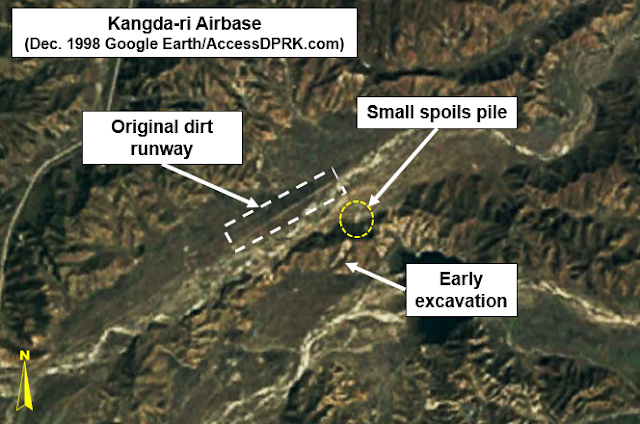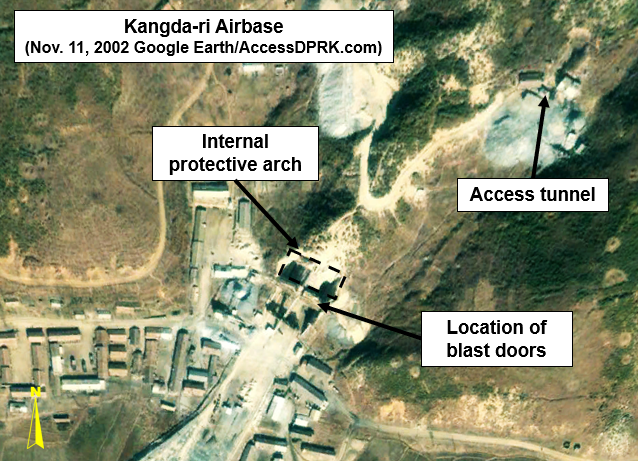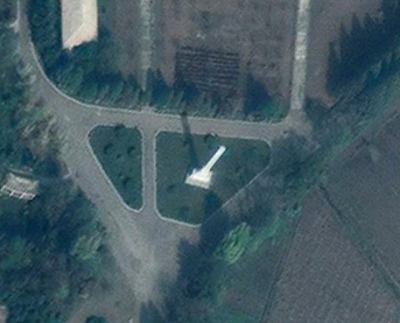(Image source: Equaldex)
Like many authoritarian regimes around the world, North Korea doesn’t recognize even the existence of LGBT people. In 2014, state media declared, "This practice can never be found in the DPRK boasting of the sound mentality and good morals..." Likewise, Chechnya and many central African and Asian states claim that homosexuality is a moral aberration brought about by capitalism or as a remnant of decadent imperialism. Of course, reality is rather different. There is no debate that homosexuality has existed in all parts of the world for all of human history. It is just as normal as any other form of humanity, be it blue eyes, dark skin, or being right-handed.
While former colonial nations take great pains to erase obvious signs of their national subjugation, many of those now independent countries opt to keep their anti-LGBT laws on the books and go to great lengths to defend them, despite the bad intentions behind the original implementation of those laws. Various colonial laws, from India to Kenya, remain on the books and many of these laws were put in place to suppress indigenous cultures and religions, and to force the inhabitants to behave the way their morally superior overlords demanded. Unfortunately, 70 countries still outlaw same-sex relationships, with many threatening extended jail times or even death. But what happens when a country doesn’t even recognize the existence of those with same-sex attraction?
The North Korean government has spent decades trying to reverse the effects of the Japanese occupation, trying to show the deficiencies of former Korean kingdoms, and attempting to strike a balance between socialist ethics and Confucian morality. North Korean propaganda would tell us that the country is a socialist paradise, free from all of the impurities of capitalism, class division, and imperialism. Among those impurities, of course, is not just homosexuality, but free democratic processes, the ability to decide what to do with your own life, and the right to dissent. There are no known laws specifically aimed at homosexuals, but there are laws pertaining to the security and unity of the state and society. The government’s outlook on LGBT people is likely similar to their outlook on religion. You’re free to believe what you want, so long as it doesn’t threaten or question the supremacy of the state in any way. In practice, this means there is no religion and those caught sharing religious ideas, or even ancient mysticism, can be executed.
Like religion, homosexuality brings up "dangerous" questions surrounding individuality. North Korea prides itself on unitary thought and actions. The Mass Games are a key piece of that propaganda for it demonstrates the unity of spirit that socialism brings by showing 100,000 people putting on a show. Threatening unity threatens the very existence of the state, and little else highlights the beautiful diversity of humanity than a group of people that not only don’t conform to traditional sexual roles but can also bend gender lines to the point that, for many, such artificial social constructs no longer exist. So, while a specific law may not exist, the appearance of threatening society is itself a crime.
There are no international gay travel groups that visit Wonsan’s white beaches and there are no known gay clubs in Pyongyang (at least, none that openly operate). But gay North Koreans exist surely as right-handed North Koreans do. Various estimates show that anywhere from 2 to 5 percent of a population will be gay or lesbian (the numbers tick up even higher when you include bisexuality). That means that statistically there are between 500,000 and 1,250,000 LGBT North Koreans.
Very little direct information from inside the country has reached the western world regarding matters of sex and sexuality. And, out of over 100,000 known defectors, only one, Jang Yeong-jin, is known to be openly gay. It would be fair to assume that the vast majority of LGBT people do not live open lives. North Korean’s general knowledge about sex and sexuality is primitive at best, with many women not even knowing what sex entails until the time comes. The rise of markets has helped in this regard, with rooms being rented out by the hour and young couples engaging in more open dating behaviors (like holding hands), but many North Koreans remain naïve. North Korea has many social anachronisms and is often described as a place lost in time.
Despite a clear history of homosexuality in ancient Rome, Greece, and China, the words “heterosexual” and “homosexual” weren’t even coined until 1869. This, plus what little information has leaked out of the country on the topic of homosexuality, leads me to believe that those million LGBT people probably couldn’t even describe themselves as gay or lesbian because they don't have the words. (Something Jang Yeong-jin has said as well.)
They know they have different desires and they know that living their lives being open with those desires would be dangerous. Undoubtedly, most end up marrying members of the opposite sex and do the things expected of them by family and society, as we know countless others do around the world.
In certain situations, like within military and university settings, same-sex behaviors appear to be an open secret. Older officers or students will take a younger man for his lover until such time as they get married to an approved female spouse. Whatever emotional relationships formed will either come to an end or are forced to be transformed into a platonic friendship or professional relationship. Even in cases where this is only "situational sexuality", where the participants aren't gay but engage in same-sex sex when women aren't available or when celibacy is required, the consensual behavior itself can get you into trouble as it is viewed as part of anti-socialist moral weakness and a threat to the state.
"Jang says he could cope with limited food or clothing in North Korea but having nothing to dream for left him miserable." - CNN
Socialist governments pride themselves on “granting” equality for women, agency for children, and being the voice of the oppressed, but when it comes to sexuality, they are often more illiberal than conservative capitalist states. Though the decriminalization of same-sex activity became de facto legal within Soviet Russia due to the abrogation of the Tsarist legal code, other soviet republics who never had such laws before (like Abkhazia, Georgia, and Turkman) ended up making it illegal. Among all communist countries, this push back against minorities of all kind, sexual and ethnic, was greatly increased during the Stalinist era. North Korea was no exception. The DPRK is both a highly homophobic regime and deeply racist one.
What little exposure people in North Korea may receive to the idea of homosexuality is negative. Placing homosexuality in terms of it being unnatural, only behaviors animals engage in, part of the moral corruption of their enemies, etc., adds to the difficulties of living life for gay people, particularly youths.
As noted earlier, there may be as many as 1 million LGBT people living in North Korea. One million people who may not even know the word for what they are or that their difference is shared by hundreds of millions of others around the world. The one thing they do know, is that having pride in themselves isn’t an option. There is no option to be recognized as existing. No option for marrying the person they love. No option for living free of fear.
June is traditionally “pride month”. It’s the month LGBT people and their allies around the globe celebrate who they are, remember the sacrifices and work of previous generations (like the Stonewall Riots in New York City fifty years ago), and when countless people make their most visible demand for equality; the right to be treated the same by the law, and the right to not be arrested, beaten, or killed. In short, the right to live and love as the human beings they are.
This June there will be no parades down the streets of North Korea’s major cities. There will be no public advocacy groups fighting for their legal protections or recognition. There won't even be a rainbow flag flying on some distant embassy. This June, let us not forget one of the most overlooked populations within one of the most overlooked countries in the world. They are all our brothers and sisters and deserve every happiness in the world.
--Jacob Bogle, 6/13/2019
www.JacobBogle.com
Facebook.com/JacobBogle
Twitter.com/JacobBogle







































